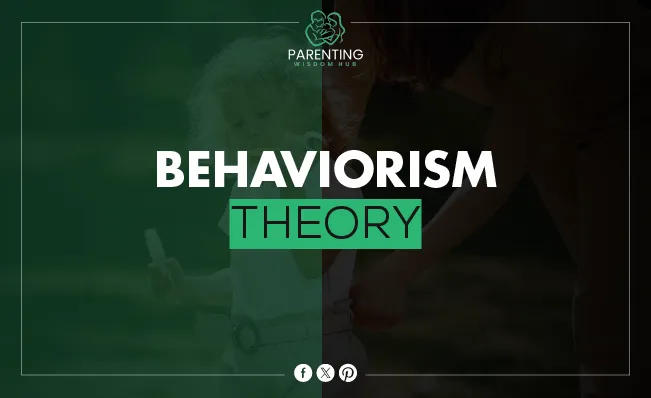Introduction
Why do kids learn best with rewards and punishments? Behaviorism theory, a psychology emphasizing external acts above internal states, hinges on this intriguing question. All habits are learned by conditioning, according to behaviorism. This blog post examines behaviorism theory’s fundamentals, development, and applications.
Read more about educational activities for kids.
The Foundations of Behaviorism
Instead of researching mental processes, behaviorism studies and analyzes observable and measurable behaviors. It states that all behaviors are learned from the environment, primarily through conditioning.
Core Principles:
- Observable Behavior: Observable and measurable behaviors are central to behaviorism. Unlike other psychological theories that examine ideas, feelings, and other internal processes, behaviorism focuses on identifiable acts. This approach makes behavior analysis more objective and scientific.
- Environmental Influence: Behaviorism holds that the environment shapes behavior. Behaviorist philosophy holds that people are born blank slates and learn their behaviors from their environment. Learning occurs when people respond to environmental stimuli. This perspective emphasizes external causes in behavior development and modification.
- Stimulus-Response Relationship: Behaviorism centers on stimulus-response. Environmental cues cause various responses in people. This link underpins behavior learning and maintenance. In classical conditioning, a neutral stimulus is associated with a strong stimulus, causing a response. Reward and punishment affect the chance of repeating behaviors in operant training.
Based on observable behavior, contextual influence, and the stimulus-response link, behaviorism provides a clear and practical framework for studying human behavior. This fundamental perspective affects education, treatment, and behavioral management.
Historical Context and Key Figures
Early Influences:
Russian physiologist Ivan Pavlov, who studied classical conditioning, influenced behaviorism early on. Pavlov found that dogs could associate a neutral stimulus like a bell with food, making them salivate even without food. This learning through association mechanism underpinned behaviorist theory and showed how environmental cues may affect behavior.
Key Theorists
John B. Watson:
Some call John B. Watson the father of behaviorism. Behaviorism became the dominant psychology theory in the early 20th century because of him. Watson advised psychology to prioritize action over introspection. His “Little Albert” experiment demonstrated this method. Watson and Rosalie Rayner taught little Albert to fear a white rat with loud sounds. This experiment proved that individuals can learn emotional reactions, supporting the idea that the environment influences behavior.
B.F. Skinner:
Skinner created the Skinner Box to study animal learning via incentives and punishments. Operant conditioning preserves behavior via consequences. The procedure involves positive reinforcement, negative reinforcement, and punishment. Skinner showed how reinforcement can influence behavior and applied it to education, therapy, and behavior control.
Their historical background and contributions built behaviorism. Early classical conditioning research, Watson’s scientificization of behaviorism, and Skinner’s operant conditioning findings shaped the theory and its uses. They underlined the need to study observable behavior and contextual factors on conduct, which still affect psychology.
Core Concepts and Techniques
Classical Conditioning
Association-based learning is classical conditioning. A conditioned response occurs when a neutral stimulus is linked to a significant stimulus. This learning method shows how environmental stimuli cause involuntary reactions.
Examples: Ivan Pavlov’s dog experiments symbolize classical conditioning. Whenever Pavlov sounded a bell (neutral stimulus) before feeding the dogs (meaningful stimuli), they salivated (conditioned response) without food. An experiment demonstrated how frequent association with an unconditioned stimulus may condition a neutral stimulus.
Operant Conditioning
This conditioning uses incentives and punishments to teach. Unlike classical conditioning, it involves voluntary action. This approach stresses reinforcement and punishment in behavior shaping.
Examples: Operant conditioning is used to train pets. Satisfying a dog with a treat increases its likelihood of doing so again. In classroom behavior management, teachers employ praise and rewards to encourage good behavior and time-outs or loss of privileges to deter disruption.
Reinforcement and Punishment
Positive Reinforcement:
Positive reinforcement includes rewarding a desired behavior to encourage its repetition. Give a youngster a sticker for completing schoolwork on time to enable them to complete it well.
Negative Reinforcement:
Negative reinforcement involves removing a negative signal to encourage a behavior. For example, if a student studies hard to avoid a bad mark (unpleasant stimuli), removing the possibility of a low grade serves as negative reinforcement, increasing studying.
Punishment:
Punishments make it less likely that someone will do something again. To punish someone, there are two ways:
Positive Punishment: This method adds an unpleasant stimulus to stop a habit. One type of good punishment is telling a child off for drawing on the walls.
Negative Punishment: This means removing an excellent stimulus to stop a behavior. Negative punishment is removing a child’s favorite toy for being wrong.
Understanding classical and operant conditioning, reinforcement, and punishment helps explain how behaviors are learned and changed. These principles apply to education, therapy, parenting, and behavior control, showing behaviorism’s practicality.
Applications of Behaviorism
Education
Classroom Management: Behaviorist methods are commonly utilized to manage classroom conduct. Teachers use token economies to reward positive conduct with tokens. This method rewards good behavior and sets clear expectations. Negative reinforcement, such as loss of privileges, might be used to reduce disruptive behaviors.
Teaching Techniques: Positive reinforcement is a crucial behaviorist teaching method. Teachers may reward pupils for completing assignments or attending class with praise, stickers, or extra playtime. These rewards motivate pupils to repeat desired activities, creating a positive learning environment.
Therapy
Behavioral Therapy: Behaviorist concepts underpin many phobias, addictions, and other problem treatments. Systematic desensitization involves gradually exposing a patient to a frightened object or circumstance while relaxing. This strategy lowers anxiety. Contingency management in addiction therapy encourages drug-free behavior with real benefits.
Everyday Life
Parenting: Behaviorism in parenting involves using rewards and punishments to alter children’s behavior. Positive reinforcement, like praise or treats, encourages good conduct, such as chores or behavior. Negative discipline, like time-outs or privilege revocation, reduces tantrums and violence.
Workplace: Behaviorist ideas are used in workplace training and motivation. To boost productivity, employers offer incentives, promotions, and recognition programs. By improving the workplace, negative reinforcement, like eliminating additional jobs, can inspire employees.
Teachers, therapists, parents, and employers can shape and enhance behavior by knowing and practicing behaviorism. Practical applications of behaviorism show its lasting relevance and impact on daily life.
Criticisms and Limitations
Lack of Focus on Internal Processes
Behaviorism is condemned for disregarding mental processes. Critics argue that behaviorism overlooks cognitive processes that impact learning and behavior. Behaviorists disregard the significance of ideas, emotions, and motives in human behavior. Behavioralism ignores how interior mental processes affect behavior, misrepresenting learning.
Ethical Concerns
Ethical issues surround behaviorist experiments. John B. Watson’s “Little Albert” experiment conditioned a baby to fear a white rat by seeing and hearing loud sounds. This experiment has been questioned for its ethical implications due to psychological distress inflicted in children without informed permission or fear of deconditioning. Ethical challenges highlight the need for psychological research on participant well-being and moral values to avert damage.
Alternative Theories
Alternative theories that emphasize internal processes and human experience have arisen to address behaviorism’s limitations:
Cognitive Psychology: Cognitive psychology studies perception, memory, and problem-solving. It addresses internal mechanisms behaviorism ignores, providing a more complete picture of information processing and learning. Cognitive theories help us understand learning by emphasizing mental activities and their effects on behavior.
Humanistic Psychology: Humanistic psychology, promoted by Carl Rogers and Abraham Maslow, stresses personal growth, free agency, and experience. Unlike behaviorism, this approach emphasizes subjective experiences and self-actualization. Humanistic psychology considers internal and external elements and emphasizes a holistic view of human behavior.
While behaviorism has helped us understand learning and behavior, its criticisms and limits have led to these alternative theories. Cognitive and humanistic psychology broaden our understanding of human behavior by including internal mental processes and human experiences.
Modern Perspectives and Integration
Behaviorism Today
Despite new psychological ideas, behaviorism is still used in many fields. Its concepts are applied in therapy, animal training, education, and behavior management. In schools, operant conditioning is used to promote good behavior and discourage bad behavior. Behaviorist tactics improve organizational employee performance and motivation through reward systems and performance feedback.
Integration with Other Theories
Cognitive-Behavioral Therapy (CBT): CBT integrates behaviorist concepts with other theories. Cognitive psychology stresses thinking processes, whereas behaviorism focuses on behavior. CBT helps people recognize and change problematic beliefs and behaviors. Cognitive restructuring and behaviorism-based exposure therapy address depression, anxiety, and phobias. CBT’s effectiveness makes it one of the most widely used and studied treatments.
Educational Practices: Modern education combines behaviorist and constructivist strategies for full teaching. Behaviorist methods like positive reinforcement and behavior modification manage classroom behavior and inspire pupils. Active, experience-based learning improves understanding and critical thinking in constructivist techniques. A token economy may reward good conduct (behaviorist) and stimulate group projects and hands-on activities to allow pupils to investigate topics.
Behaviorism’s longevity and integration with other psychological theories show its versatility in addressing various behaviors and learning processes. Modern behaviorist and cognitive-constructivist approaches can improve learning and behavior change in diverse circumstances.
Final Thoughts
Behaviorism has profoundly influenced psychology. Focusing on observable behavior and environmental factors has offered a clear and practical framework for understanding and changing behavior. Despite criticism, behaviorism is effective in education, therapy, and other fields. Its combination with cognitive and constructivist psychology theories makes it adaptable and durable.


